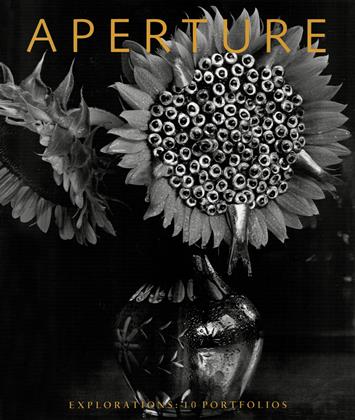CHRISTIAN WALKER
"White people thought that my work had reached a point where I was trying to make them feel guilty. And black people felt that I was bringing up some notions that should no longer exist in the culture. "
Aperture: Has your work always been about racial issues?
Christian Walker: Well, I made a real switch when I moved from the Northeast to the South. The work before that was based on a more economic analysis of culture. When I got to the South, I saw that things are really divided along racial lines. I also shifted from a documentary mode to manipulated work.
The series “Another Country” and “Evidence of Things Not Seen” were made at the same time. I really wanted to juxtapose the work I was doing on the street with historical images of it. The images in “Another Country” all came from the National Archives. I rephotographed them and used the black line of the 35mm negative as a dividing line. It was a metaphoric device based on W. E. B. Du Bois’s theory that the color line was the most important line of the twentieth century. Actually, the title came from James Baldwin’s book, Another Country, which suggests that simultaneous countries exist in America.
A: How did “Mule Tales” evolve?
CW: When I was a kid, all of the books in my house were popular literature—such as Mandingo and Drum—that contained African-Americans. There’s a history of how African-Americans are contextualized by the dominant culture.
It occurred to me that minorities don’t necessarily have jokes about the dominant culture. They have a lot of complaining and resistance but they don’t have a lot of jokes. So I started doing some research in terms of jokes. I found some in the minstrel shows, and I found some really interesting books. There is a book called Negro Jokes For Intelligent White People from 1963, and a book called Mule Tales In Its Relation to Dixie Darkies, which was a 1942 Southern treatise on how happy the darkies would be if we’d just leave them alone! I coupled them with images from lurid paperback novels that all deal with either sexuality or violence. Again, a subject that comes up with me a lot is miscegenation and sexuality.
A: What was the reaction to your work?
CW: As for “Mule Tails,” I got a lot of negative criticism from both black people and white people. White people thought that my work had reached a point where I was trying to make them feel guilty. And black people felt that I was bringing up some notions that should no longer exist in the culture. I do a lot of accusation or confrontation in throwing racist jokes out there. Actually, I prefer to call them “racialist jokes.”
A: What’s the distinction to you?
CW: I don’t really see them as overt forms of racism. I see them as addressing the way that white people contextualize AfricanAmericans in the culture. I feel firmly about taking a critical stance rather than an emotional stance.















